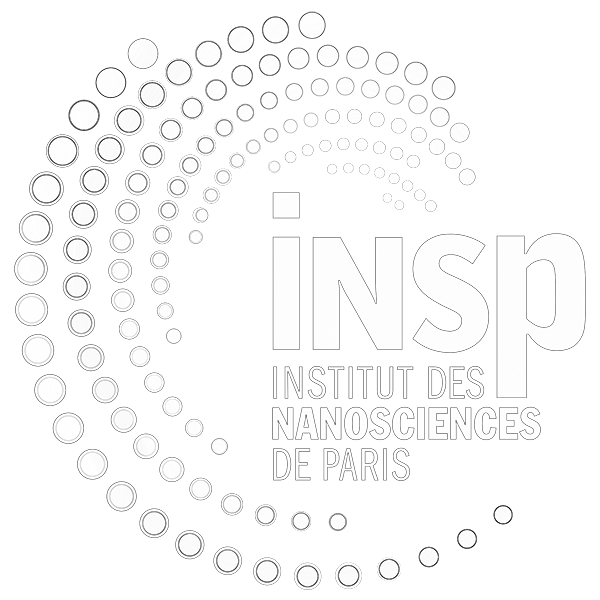Hot electron injection and defect control in Au–TiO₂ nanocomposites probed by ultrafast transient absorption spectroscopy
Contact : levy@insp.jussieu.fr, gregory.cabailh@sorbonne-universite.fr, pluchery@insp.jussieu.fr
Tutelle : INSP
Mots clés : Energie, Experimental, et Stage M2
Gratification : Oui
Page des stages de(s) l'équipe(s) : Oxydes en basses dimensions Physico-chimie et dynamique des surfaces
Description du stage
⇑ Click above ⇑ for a detailed description
Description: Embedding plasmonic Au nanoparticles (Au NPs) into TiO₂ thin films enables visible-light harvesting through localized surface plasmon resonance (LSPR) and hot electron transfer to the semiconductor [1]. The efficiency and lifetime of these carriers depend critically on the TiO₂ phase (anatase vs rutile), the density of oxygen vacancies (V₀/Ti³⁺), and the thermal stability of the nanostructure [2]. The internship will focus on sputtered TiO₂ films with embedded Au NPs produced by pulsed laser ablation in liquids (PLAL) [3,4]. We will combine UV-Vis spectroscopy and femtosecond transient absorption spectroscopy (TAS) at 1.3 μm to quantify hot electron injection under plasmon excitation [5]. Controlled annealing (air vs vacuum) will be used to tune defect density, while XPS and XRD will characterize oxygen vacancies and phase. Reference TiO₂ films without Au NPs will serve to isolate plasmonic contributions. This work will clarify the quantitative role of oxygen vacancies in hot electron injection and carrier dynamics in state-of-the-art PLAL-based nanocomposites.
[1] H. Tang et al., J. Chem. Phys. 152, 220901 (2020).
[2] H. Wang et al., J. Phys. Chem. Lett. 14, 8312 (2023).
[3] D. Amans, W. Cai, and S. Barcikowski, Applied Surface Science 488, 445 (2019).
[4] O. Sublemontier et al., WO2019149763 (8 August 2019).
[5] D. C. Ratchford et al., Nano Lett. 17, 6047 (2017).
Techniques/methods in use: Thermal treatments under controlled atmosphere (air, vacuum). UV-Vis-NIR spectroscopy. Transient absorption spectroscopy (femtosecond pump–probe). X-ray diffraction (XRD), X-ray photoelectron spectroscopy (XPS).
Applicant skills: Good background in solid-state physics and optics. Strong appetite for experiments and data analysis. Competences in laser–matter interaction, ultrafast spectroscopy, or nanomaterials synthesis/characterization, photoelectron spectroscopy or vacuum systems will be appreciated.

